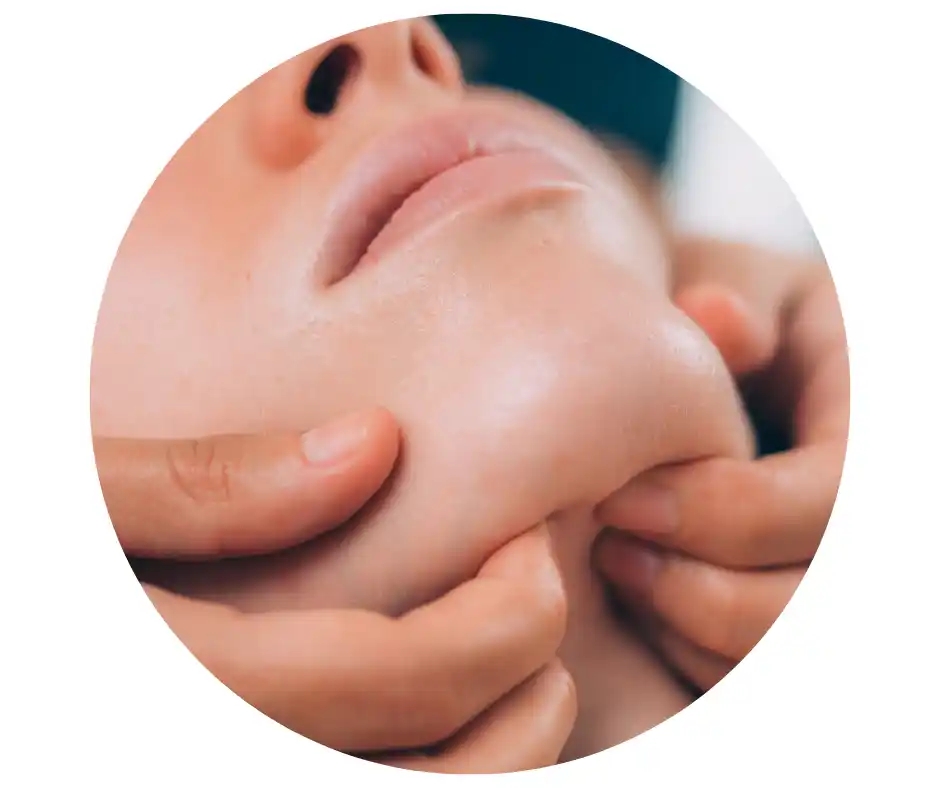Choose a dental topic
Get savvy with Dr Sarah
TMJ Dysfunction and Jaw Pain
What is the TMJ?



Are you ready to meet the best dentist, for you?
They’re waiting for you on Airsmile
- Compare dentists against the things important to you
- Book and manage your appointments in one place
- Request, store and share your dental records in a swipe
- Finally get the confidence to take control of your dental health
Free to use...
What does TMJ look like?




TMJ Dysfunction and Jaw Pain explained
Dr. Sarah explains everything you need to know
about TMJ treatment at the dentist
Most people think that dentists deal only with teeth, but that couldn’t be farther from the truth. Dentists deal with the mouth as a whole, and that comes with all kinds of structures surrounding the mouth, helping it to do its functions of biting, chewing, and speech. One of these structures is the Temporo-mandibular Joint (TMJ for short). Some dentists are specialized in dealing with the TMJ and its problems. In fact, it is one of the most delicate specialties of dentistry.
Every human has 2 main jaws, the upper and the lower. The upper jaw (called the maxilla) is part of the skull, while the lower jaw (called the mandible) is a separate bone. They are joined together at the TMJ, which is commonly known as the jaw joint.
What is the TMJ composed of?
The TMJ is an incredibly intricate structure. It is composed of a number of structures, all working together to create the incredible mechanism of jaw movements. These structures include:
1. The Bones:
As we said before, the 2 main components of the jaw joints are the maxilla and the mandible.
2. Cartilage:
One of the main structures of the TMJ, and the one most liable to problems (a bit more on that later on). The cartilage is situated between the maxilla and the mandible so that when the jaw moves, the bones don’t grind together causing their damage. The cartilage divides the jaw joint into the upper and lower compartments.
3. Muscles:
Muscles of the jaw control all of its movements, including eating, chewing, biting, and of course speech. The muscles are actually not a part of the inner composition of the joint, however, they are one of the most important parts of the mechanism.
4. Ligaments:
Ligaments are similar structures to muscles. You may think of them as very thin muscle fibers. The main function of these ligaments is a limitation of jaw movement so that your jaw doesn’t get dislocated every time you open your mouth.
5. Synovial fluid:
If the bones and the cartilage are the gears of the jaw, then the synovial fluid is its lubricating oil. The fluid fills the entire cavity of the jaw and lines all the structures within. This allows all the movements to be done smoothly, and with no damage to the bones or cartilage.
How does the TMJ work?
All of the above structures combine to form all the jaw movements. Basically, all the movements can be attributed to the main form of motion, dividing the jaw movements into 2 main mechanics: opening and closing.
Opening motion:
First, the muscles that open the jaw contract, causing a pulling action of the bones of the jaw. The movement starts in the lower compartment, where the condyle (which is a circular bone located at the upper edge of the mandible) rotates, and the jaw begins to open. The movement then transfers to the upper compartment, where the disc, the condyle and the whole bone of the mandible move forwards and downwards until the mouth reaches its full opening potential (limited by the ligaments we mentioned earlier).
Closing motion:
The exact reverse of what happens during opening. The muscles that close the jaw pull it upwards and backwards, and the condyle rotates in the opposite direction until the mouth fully closes.
What kinds of problems could affect the TMJ?
As you could probably surmise by now, the jaw joint is an incredibly delicate structure, with lots of components that could get damaged, causing a wide array of problems. These problems are collectively called Temporo-mandibular disorders (TMDs).
Examples of TMDs:
1. Muscle pain:
A condition more common in females. Muscle pain is a result of inflammation of the muscles of the jaw.
- Causes:
The exact cause is unknown but is most probably related to stress.
- Signs and symptoms:
The condition is mostly limited to bearable pain in the muscles, similar to when you pull a muscle in the gym. However, in some extreme cases, the pain may become so severe that it actually affects the range of motion of the jaw. It could also radiate to the temples or the neck, causing quite an uncomfortable headache.
- How it is treated:
Treatment usually starts with removing the cause of the problem (aka the stress). Then, just palliative treatment to alleviate the pain with painkillers and muscle relaxants. Hot compresses can also be very helpful in reducing muscle spasms.
2. Disc dislocation:
One of the most common problems to affect the jaw. As you know by now, the disc is the main component responsible for the smooth gliding movement of the jaw. Problems with the disc can cause a severe reduction in movement.
- Causes:
The disc could get dislocated as a result of trauma to the jaw. Another common reason is also constant grinding and mashing of the teeth together (either consciously or unconsciously) causing extra pressure on the disc and on the joint as a whole.
- Signs and symptoms:
The symptoms start small. Mild pain in the jaw joint during movements, and a clicking or popping sound can be heard when you attempt to open your mouth. The symptoms get worse over time. The pain increases exponentially, and eventually, the disc would become permanently dislocated, causing limitation of mouth opening.
- How it is treated:
First of all, teeth grinding has to stop. This can be done by visiting the reason why the grinding happens in the first place (usually due to stress), and a nightguard is also needed. The second phase is supportive treatment, where the load on the jaw is decreased. This is done by cutting the food into little pieces, avoiding opening the mouth too much (especially during yawning), and using a muscle relaxant. This is usually as much as the situation develops. However, some unlucky few go into the advanced phases where the disc is damaged or permanently dislocated, in which cases surgery is needed.
While most dentists are trained to identify TMJ dysfunction, not all possess the required skill to properly treat them. For that, you need to visit an oral surgeon, and not just any oral surgeon, one that is specialized in diagnosing and treating TMJ dysfunction and dealing with the incredibly delicate structures of the TMJ.
Final words about TMJ
A visit to the dentist is a dreaded one. Most people tend to prefer living with some pain than enduring a gruelling visit to the dentist. While that is unhealthy and dangerous in most situations affecting the teeth such as decay and gingivitis, words cannot describe how problematic waiting out a TMJ dysfunction can be. From our words, you can see that treating almost all conditions early is as easy as some medication, and some local treatment to prevent the progress of the situation. Waiting, however, converts that simple form of treatment into more advanced and dangerous surgeries. These surgeries are not only painful and hard to recover from, but their success rates are not great either.
So our final words … Early detection and treatment is probably the most important step if you suffer any of the abovementioned symptoms.
- Download the free app or join AirSmile online in seconds!
- Click on BOOK
- Scan in your TMJ treatment quote
- Select your perfect dentist from our list of TMJ specialists
- Find a time, complete your details and confirm your booking
Get even more savvy with our FAQ'S
WE'RE DENTAL.. BUT HELPFUL.. BUT CLEVER..
What is the main cause of TMJ dysfunction?
There is a variety of TMDs that can happen to anyone, each with a most common cause. However, most TMJ dysfunction could be attributed to stress, leading to constant grinding and mashing of teeth together. This action causes a lot of stress on the muscles, cartilage and bones of the jaw, and could be the precursor of almost all jaw problems.
Another cause to look into is missing teeth, or other problems leading to a change in occlusion (this is the way your teeth meet together). Any disturbance of the environment inside the mouth leads to increased pressure on the joint, which in turn causes internal problems in the mechanism.
Do TMJ dysfunction go away on their own?
Unfortunately, they never do. While the symptoms may subside, the condition is never resolved unless treatment is administered. But fear not. Most of the early problems can be easily resolved with relief of stress and some palliative and supportive treatment. So our advice .. don’t wait.
What happens when TMJ dysfunction are left untreated?
The initial symptoms of most TMJ dysfunction are simple. Mild pain, a little limitation in motion range, all of which can be treated easily. When you wait, the symptoms only get worse. The pain becomes so severe that pain killers no longer work, and the limitation of jaw movement becomes more pronounced. In some specific TMJ dysfunction (such as disc displacement and arthritis) Internal damage to the disc and bones occur, which can only be treated by surgery.
Can TMJ dysfunction change your facial appearance?
Most TMJ dysfunction happen inside the joint capsule, and therefore do not affect the outer appearance of the face. The only one that can cause facial disfigurement is jaw fracture, where the bones are out of place and the mouth cannot close properly, and so the appearance could change until the bone is set back to its original position.
What can a dentist do for TMJ dysfunction patients?
All dentists are properly trained to spot the signs and symptoms that point to a specific TMJ dysfunction. After that, they would prescribe the initial treatment protocol that mostly involves muscle relaxants, pain killers, cold compresses and physical therapy. If the situation develops, he\she would refer you to a specialist oral surgeon that can continue with the other more advanced forms of treatment.
Is ice or heat better for TMJ dysfunction?
Ice usually works when muscle spasm is the main problem, and that is not the case with most TMJ dysfunction. Conditions such as TMJ muscle pain are due to inflammation of muscles, and in these cases, heat is more helpful. Heat increases the blood flow to the area, increasing the flow of nutrients and expediting the washing out of toxins. Hot compresses are an integral part of the initial phase of treatment.
Do mouth guards help with TMJ dysfunction?
Absolutely. Mouth guards serve as cushions to alleviate the pressure form the joint structures. Just like the hot compresses, muscle relaxants and pain killers, they are an important part of the initial phase of treatment, one that can help a great deal in controlling the situation and preventing it from advancing into the more dangerous stages.
How do I get rid of jaw pain?
Diagnosis of your condition is a key step, then the proper treatment can be administered by the dentist or oral surgeon. Over the counter pain meds can help, but they are kind of a double-edged weapon, because when the pain subsides, most people think their problem is resolved, and refrain from visiting a dentist altogether. If the condition is not monitored, it could easily – and quickly – advance into the danger zones.
How much does it cost to fix TMJ dysfunction?
Initial phases are very easy to treat, and therefore not expensive at all. All you could need are some pain killers, muscle relaxants and a cheap night guard to help your situation. However, as the situation progresses, so does the costs. TMJ surgeries are quite expensive, but most are covered by insurance. The financial cost is one thing, but the physical cost is another. As we stated, recovery from TMJ surgeries is a long and rocky road, and some of these consitions could also relapse even after surgery. So you better not let the problem progress to these tricky stages.
Explore More Dental Treatments & Their Costs.
